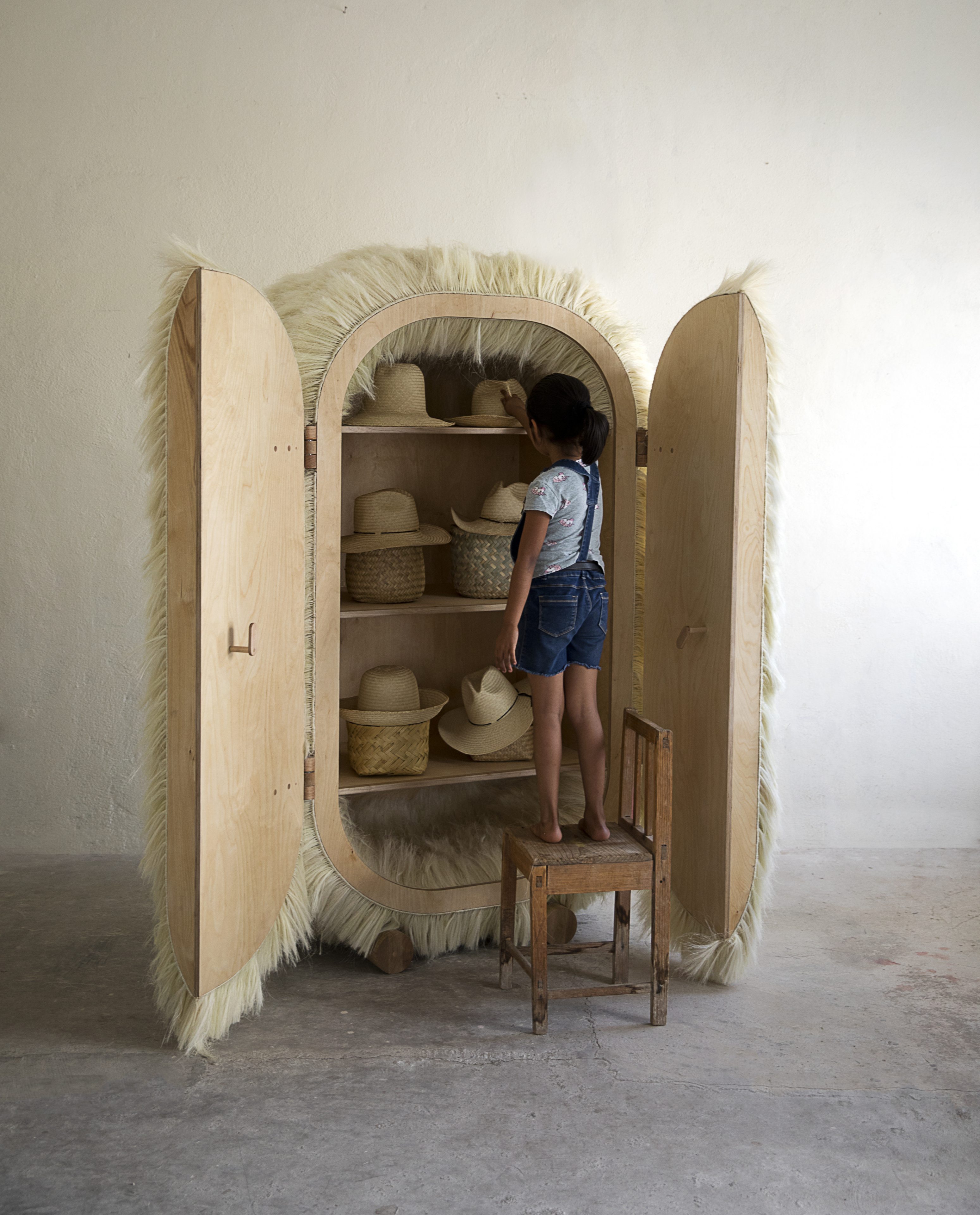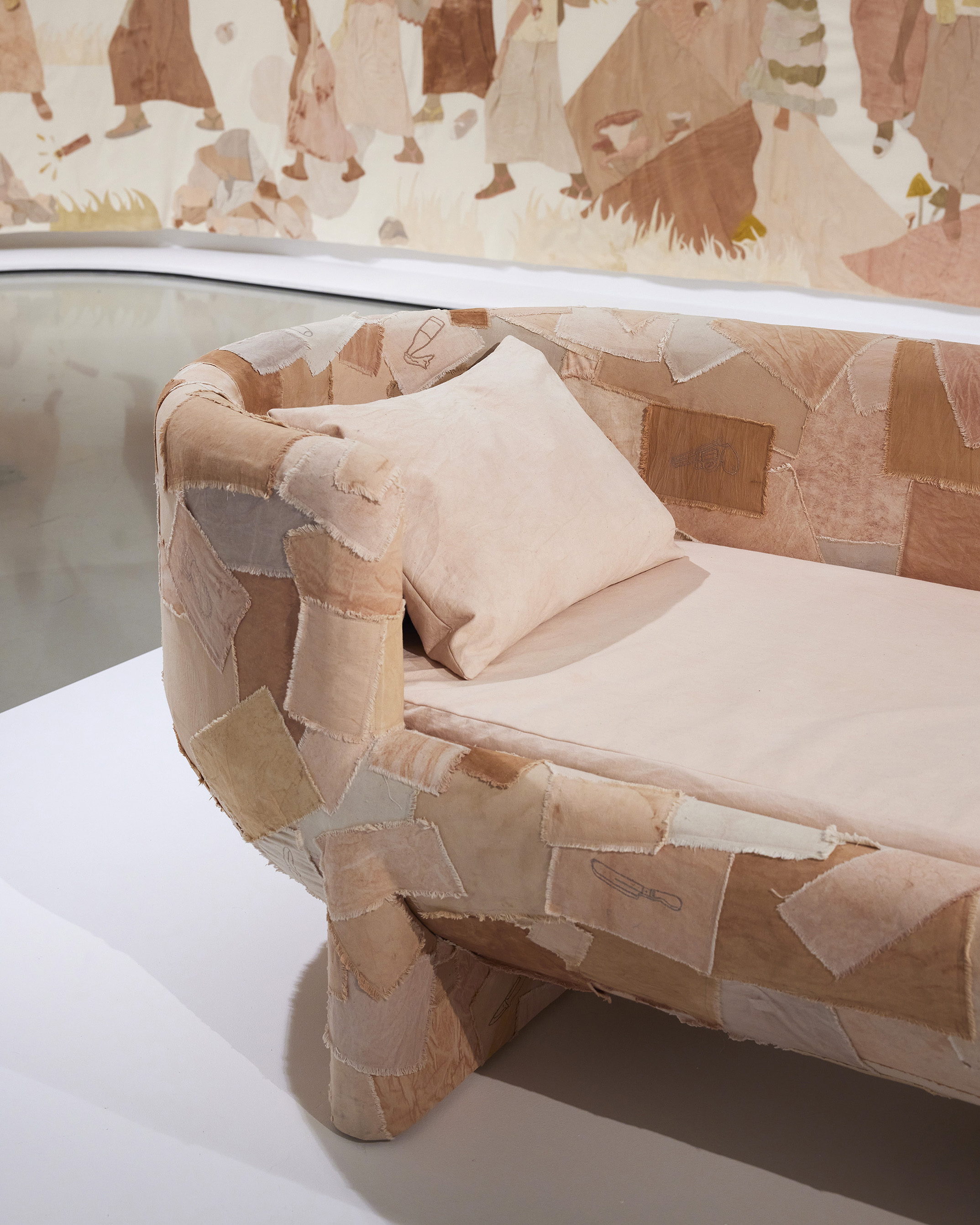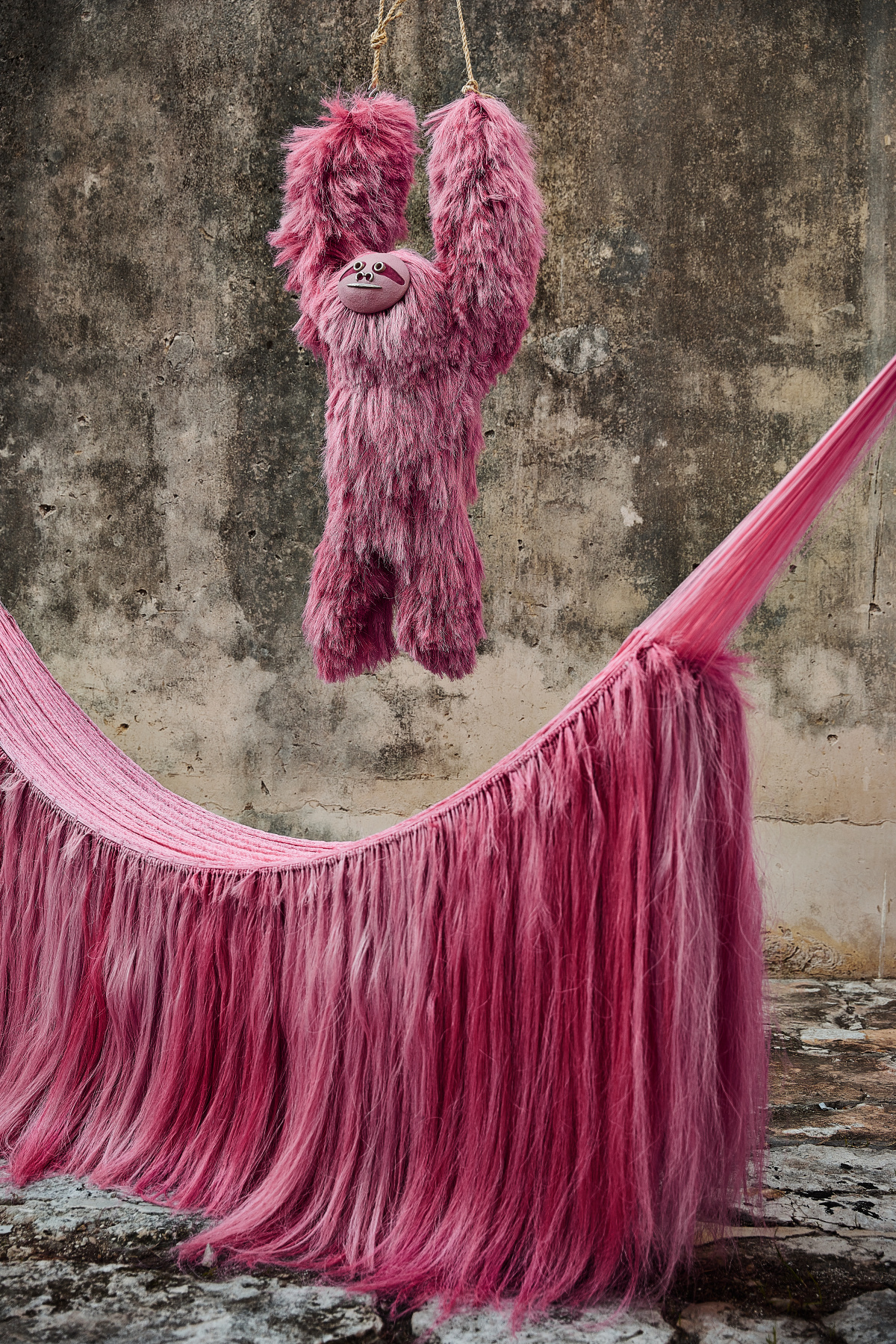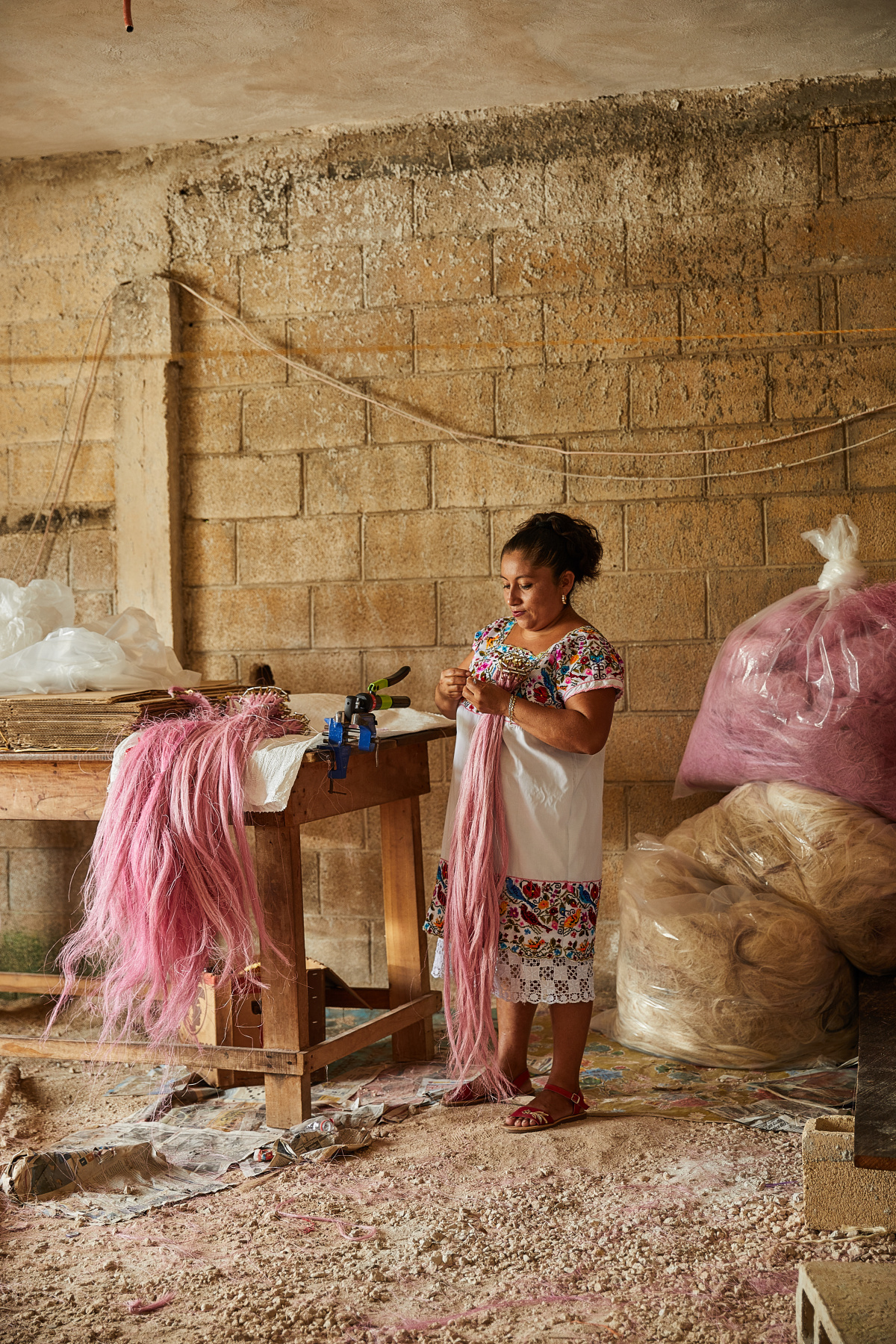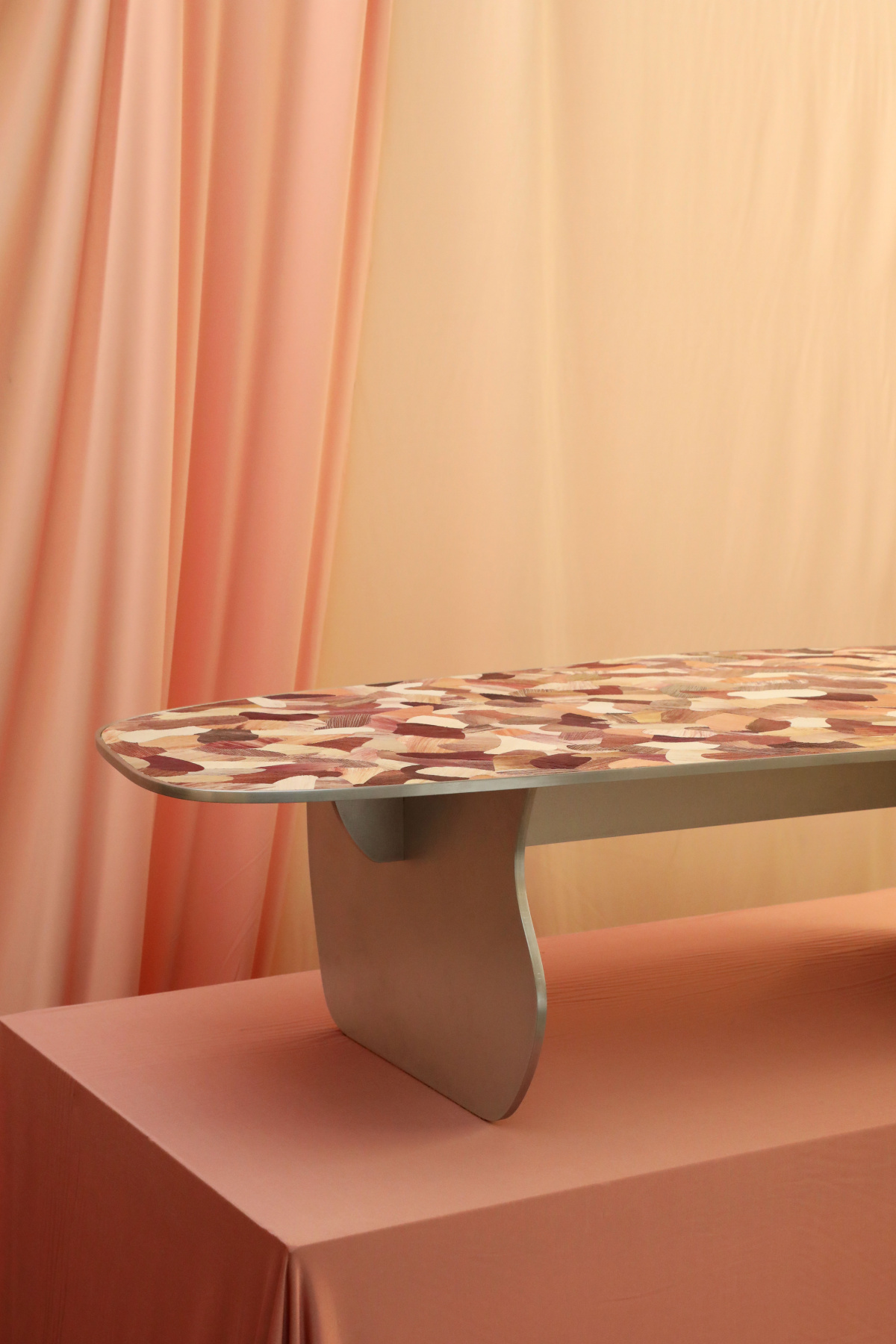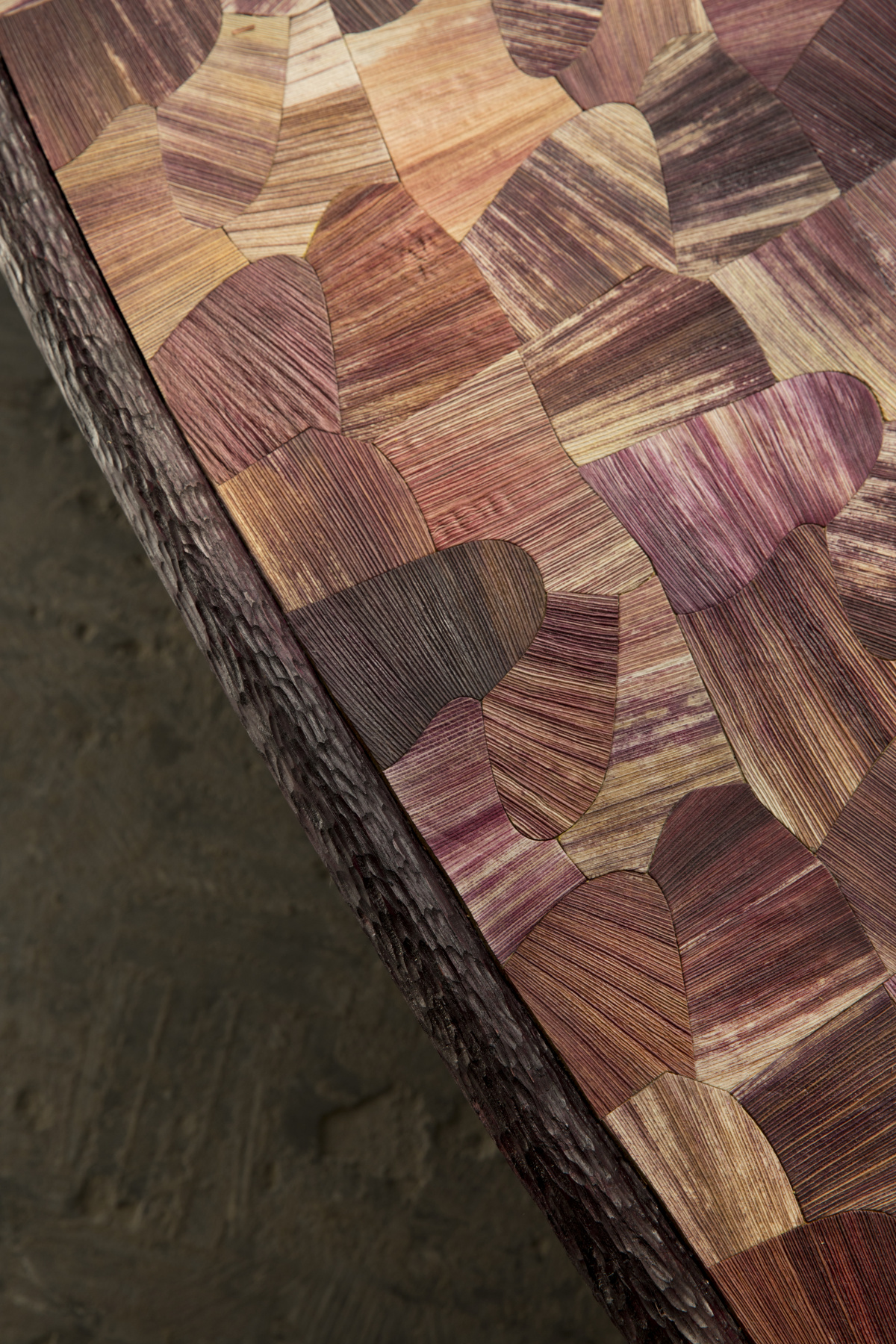Marc Benda is a co-owner of the renowned Friedman Benda Gallery in New York City. Coming from a family of collectors, his upbringing instilled an innate sensibility for objects and a keen eye for art. His approach to curation and representation exhibits a commitment to innovation and a deep respect for the artists’ processes.
Fernando Laposse is a Mexican designer known for his material-driven practice. He transforms humble materials into refined design pieces, promoting their regenerative possibilities while addressing environmental issues. His work pays respectful tribute to the people and their struggles, emphasizing mutual respect over profit and showcasing the holistic nature of his practice.
—Gianna Annunzio
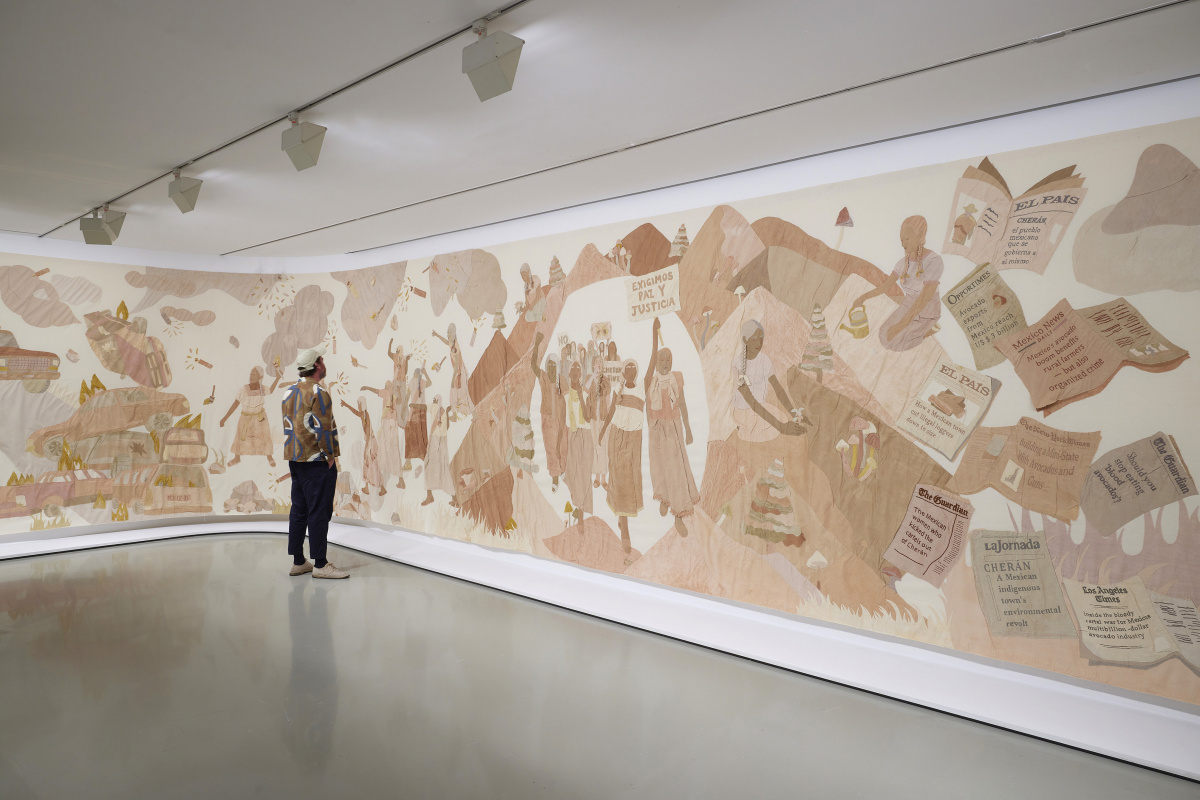
Marc Benda: Before I began representing Fernando at Friedman Benda, we formally worked together through a curated group show at the gallery in 2021 called Split Personality. That was the first exchange. I think we were curious about each other. The way that works is always different but also similar. You see something or someone and you want to know more. Before you know it you’re in a dialogue.
Fernando Laposse: We started talking because of the show. But there were certain details that were a bit out of the ordinary, which were fun as well. Before the show I missed the consolidated shipping date to send the piece I was exhibiting. That led to me missing a photo shoot for the catalog, so I ended up taking one myself. I emailed the photo to the gallery with a profuse apology and somehow you were copied on that conversation.
I think out of this sort of Mexican disorganization and mistake, I popped up on your radar. We ended up having a nice conversation about the piece itself. You eventually told me you’d like to potentially start working together. I don’t know if you remember this, but you wanted to explore the possibility of doing a furniture piece for your daughter’s room. Under any other circumstance I would have jumped at it and said “yes.” Though I think at that point I was looking for the opportunity to pitch an ambitious project I had been working on called “Conflict Avocados.”
The project started with my partner, a journalist, who was covering a story on an activist protecting the Monarch Butterfly Biosphere Reserve in Mexico. I immersed myself in that, learning about the issues they faced. Interviews with the activist were incredibly insightful. However, the project took a dramatic turn a year later when he was murdered. His murder profoundly shifted my perspective, highlighting other aspects of the environmental crisis that are more pertinent to the Latin American reality.
My “brief” elevator pitch resulted in an hour-and-a-half conversation over Zoom. Now I realize how much of that was precious time with you because you’re a busy guy.
I’m busy, but I take the time when it’s something interesting. What you showed up with was not, “Hey, I can make something in a different material.” It was an immensely ambitious and fascinating project. It was mind-blowing. It made me realize how deep your practice runs. It’s something I’ve never witnessed in my professional life. The way you incorporate materiality and a narrative and working with communities—taking those things and making completely idiosyncratic pieces that are both rooted in the “now” and in history that are also rooted in a place while making sense in a globalized dialogue—I’ve never seen a vision that expansive.
- Fernando defends traditional materials that have been overlooked and transforms them into playful designs that enchant and inspire, like this furry closet made from agave fibers. Photo by Fernando Laposse
- “Conflict Avocados” highlights the environmental and social problems of the avocado industry in Mexico, including deforestation and violence. Photo by Sean Fennessy, courtesy The National Gallery of Victoria
It was an interesting experience to get to know how you operate as a person but also as the director of the gallery. I was expecting either “No, thank you,” or a “Yes, let’s do it.” The answer I got was, “This is too ambitious for just showing it in the gallery. Let’s look at other avenues of showing this.” I knew you were someone who was operating completely differently.
At the time, I was only starting out working with galleries. I felt a lot of them were similar to really expensive shops. You were visionary when you said, “This deserves a museum show rather than a gallery show.” That was the beginning of it.
My choice when working with someone is about how interesting their work is, how the dialogue is with them, and how much I can learn. How much I can grow along with the artists. That’s why I do this job. When you talk about the geopolitical ramifications of a material, that’s when I pay attention. There’s a very local part of a history for you, too, being based in Mexico.
I also don’t present research through documents that tell a big story behind the material. That big story is exemplified by a real person or a real community that I typically spend years working with. I physically situate myself in the community. I like to think I do that differently as well, because it’s not only about doing the research from the comfort of your computer. You need to establish social relationships with these people so you can tell their story in the best possible way. Their story is a microcosm of a much bigger situation.
- Over 1,000 pounds of string—handmade from about 15,000 agave fibers—were used for the Pink Beasts, installation in the Design Miami District.
- Fernando’s project was a social practice collaboration with farmers and artisans from the Yucatán, making economic opportunity while highlighting indigenous craft traditions. Photos by Pepe Molina
I love working with farmers, for example, because the material is their life. Their crop is their life. It talks about culture, and it talks about locality. The issues they’re facing tend to be because of macro things.
There also tends to be an intelligence in the work you can’t read in books. You learn things you can’t just go online and look up. For a gallery with a global design program, messaging is very important. I want to ensure I’m not showing a narrow band of creators. If you look at your work from a distant point of view, you check most boxes. There’s sociological impact, there’s a social design component that few possess. There’s an engagement with indigenous communities. There’s the craft that is both innovative and forward-looking and based on historical heirloom precedent.
That’s true. The designs I develop in Puebla with corn and agave, for example, have a personal connection to me. This is a town full of people I knew as a kid who are facing real struggles. I think we have been able to collaborate successfully for so long because there is trust and personal connection.
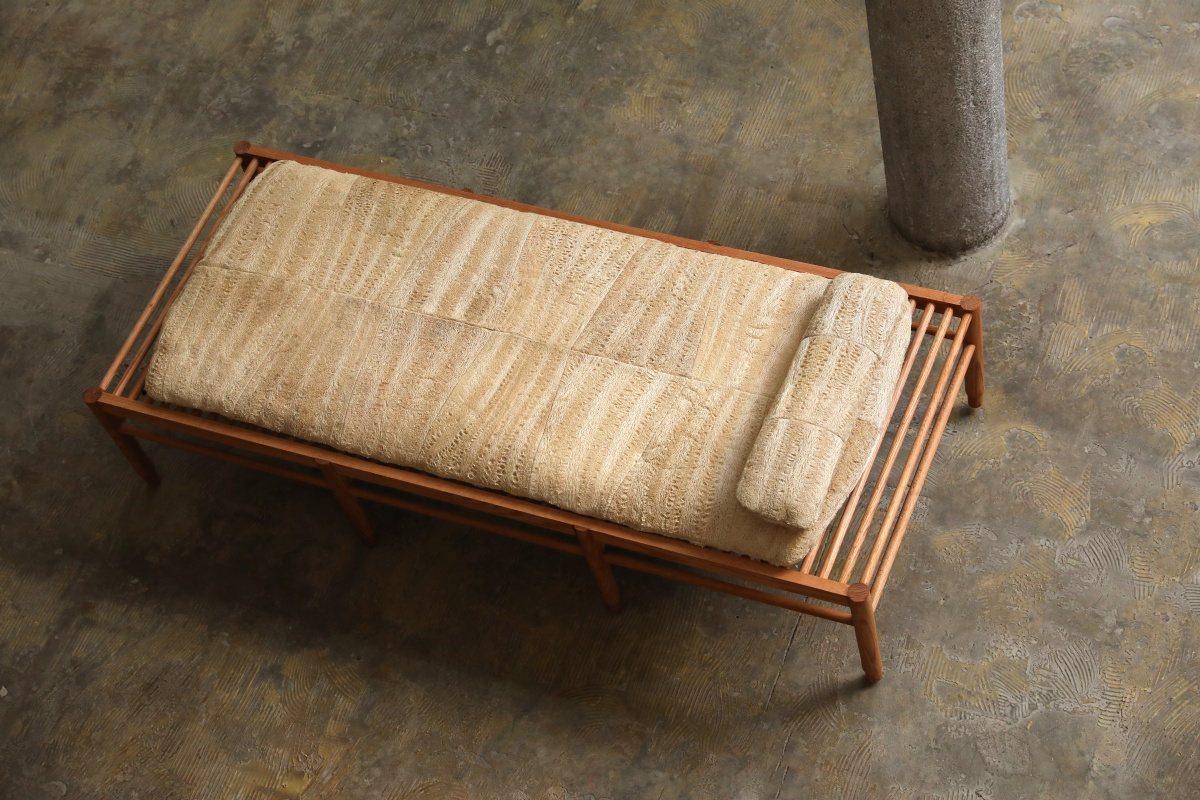
Though we generally associate loofahs with scrubbing and bathing, Fernando aimed to incorporate the material beyond the bathroom. Photo by Fernando Laposse
A lot of younger designers ask me, “How do you approach a community like this?” For me it’s important for people to understand that design is more than just drawing on paper or creating a CAD drawing and sending it off. It’s about understanding social dynamics. Being able to tell these stories through design is incredibly powerful. It keeps me passionate about the discipline. You grab people’s attention with the material, but there’s a compelling story behind it.
Along the lines of material, my family are collectors in a classic sense. I spent my childhood going to flea markets, finding things we liked, and researching them. I became an accumulator over the years—it’s an impulse. Some kids have it, some kids don’t. It’s really something innate. It informed a sensibility for objects and confirmed what I wanted to do had to do with physical objects and the creativity that stood behind them. The objects we surround ourselves with are life-defining in a way. When you have a home with things that are meaningful to you, it has an impact on your well-being, on your psyche. You build a personal narrative with objects you carry, sleep in, sit on, eat with. There’s a cultural expression in those things.
- Totomoxtle is a new material that harnesses the brilliant spectrum of color seen in the husks of heirloom corn.
- Varying from deep purples, to soft creams, Totomoxtle showcases the natural color range of species of native corn that exist in Mexico. Photos by Fernando Laposse
Not everyone thinks of it that way, but when you find an old fork from 1,000 years ago in the ground, people get excited because it tells us how those people lived. When you go to IKEA and buy a fork, you don’t get excited; you just buy a fork. But think about it, in 1,000 years, somebody would say the same thing.
I collect a lot of craft. For example, my grandfather was an architect. If you do construction work in Mexico City, there’s a good chance you’ll come across an Aztec idol or something. He had a big collection of those items, which I inherited. I cherish them very much. This represents the more classical aspect of my collection.
But my practice also involves collecting materials to build with, much like assembling a palette. When we were talking about these interview questions yesterday, I think you used the word “hunter gatherer,” which I found quite accurate. I’m constantly picking up things that interest me, whether for their material qualities or the stories behind them. In the studio we have a little room filled with items I haven’t used yet but might someday. It’s almost like building a catalog of physical ideas represented by these materials.
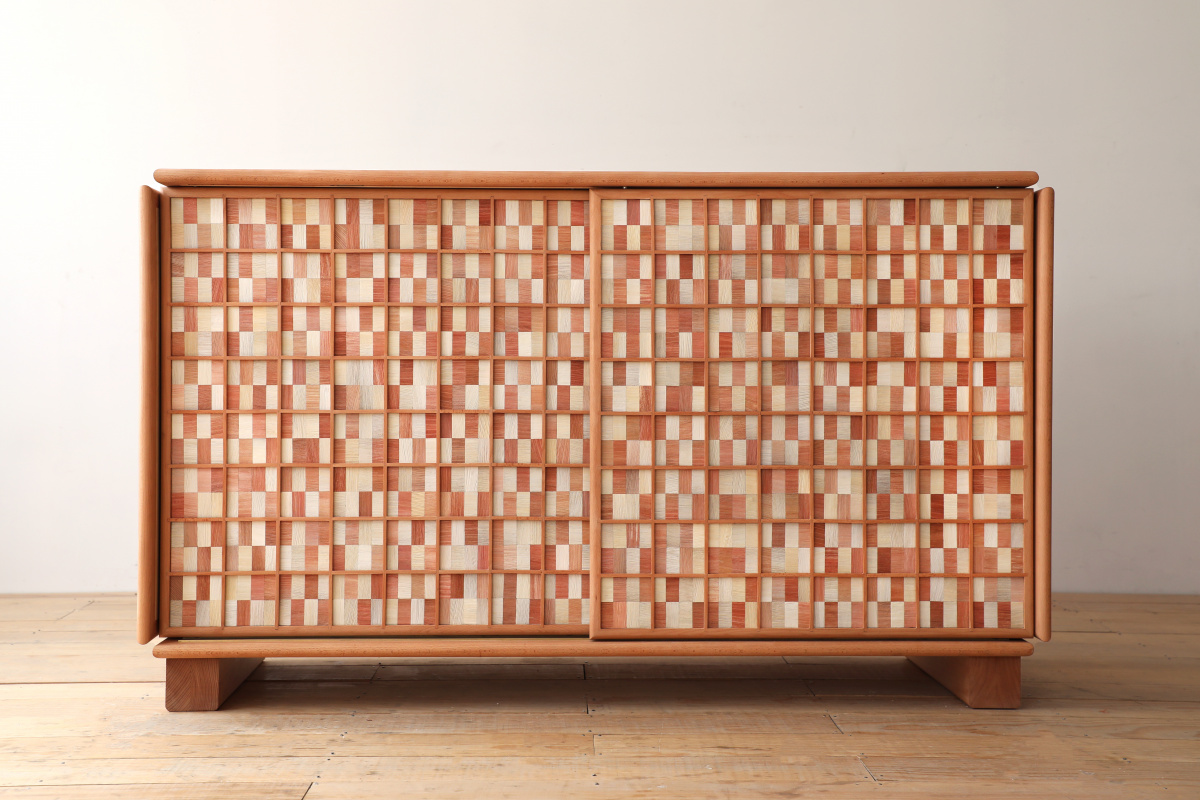
For Fernando’s Totomoxtle furniture, each husk is carefully cut and peeled off the cob, ironed flat and glued onto a paper pulp or textile backing. At this point the material is ready to be cut by hand or laser into small pieces that are reassembled to make marquetry for furniture or interior surfaces. Photo by Fernando Laposse
Every time I go to Puebla I return with a car full of stuff. People in my studio always panic when I open the trunk because they wonder where all the new items will go. I save bits of wood, rocks, seeds, and fluff—things that will eventually get used. Even if they don’t, having them around the studio is inspiring. I usually remember where I picked something up, what it was, and why I did it. I collect bizarre things. I have a giant wasp nest in my room right now—though it’s dry.
Those papery ones? They’re amazing.
I’m fascinated by how they build those things. When I was a kid my mom was a children’s painting teacher. One of her star exercises was to get us kids to pick a leaf, look at it, describe it, and touch it. I think that was a formative experience that led me to being a collector of things from the natural world.
You have really pushed me to elevate my handmade skills as well. Much of my process involves mastering the unconventional materials I use, understanding them so well that I can present them in a refined way. Many designers start with standard materials and make them look more organic or alter them significantly. For me it’s the opposite. I start with something that looks like nothing and work to transform it into something precise and well-finished.
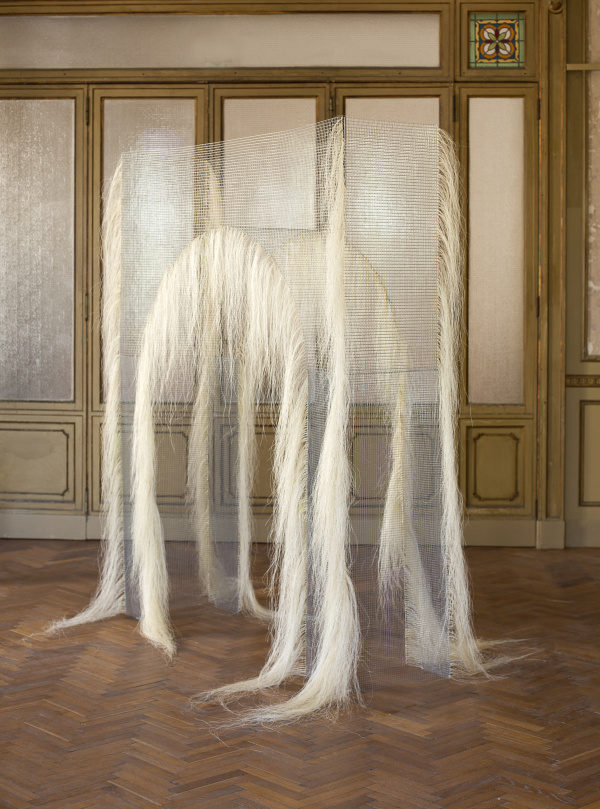
Installation made of agave fibers. Art and photo by Fernando Laposse
The gallery has been instrumental in this process—not just in terms of their expectations but also by providing financial support. This allows us to spend the necessary time to resolve any issues and perfect our work. It’s been refreshing to work with a gallery that tells you, “It doesn’t matter if it takes you half a year to develop something; do it properly, and we’ll support you along the way.”
I can be quite pushy when I feel there’s a goal and we can get there, but there needs to be a certain commitment or input. There were over a million pairs of eyeballs who at least looked at “Conflict Avocados.” Who knows how many of them were touched by it or inspired to do something interesting themselves.
That’s another measure of success for me. It’s great to make pieces that get collected by wealthy or important people. Though I think ultimately I’m grateful to have the space and time to put ideas forward that will change behaviors or incite different critical thinking.
A version of this article originally appeared in Sixtysix Issue 12. Subscribe today

